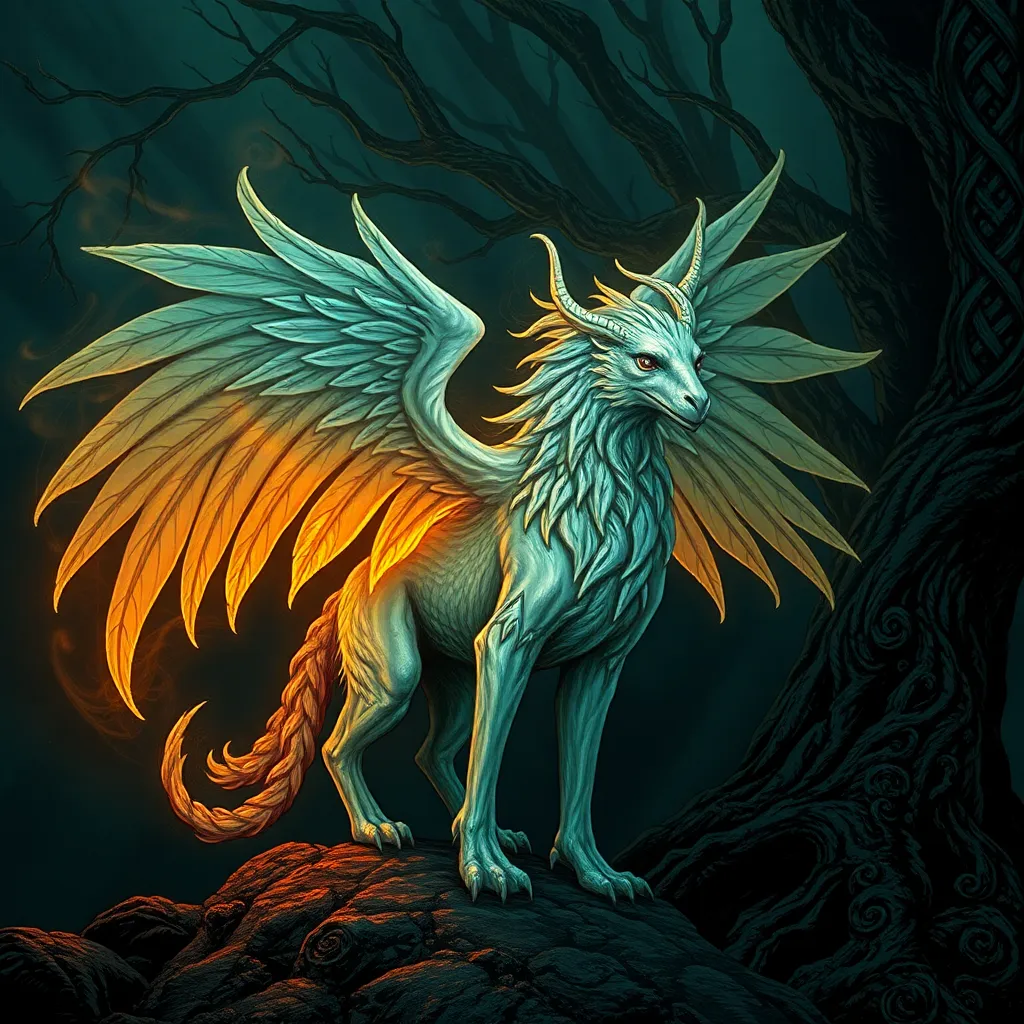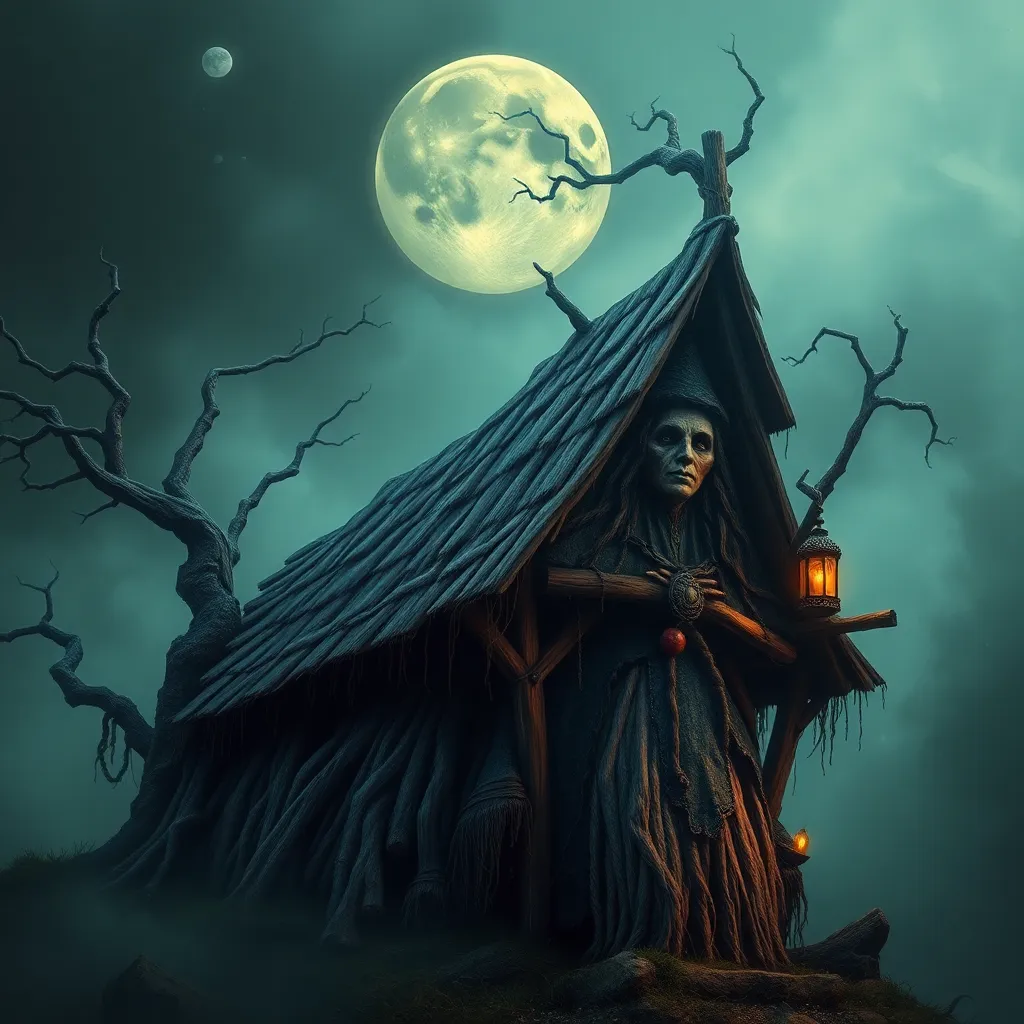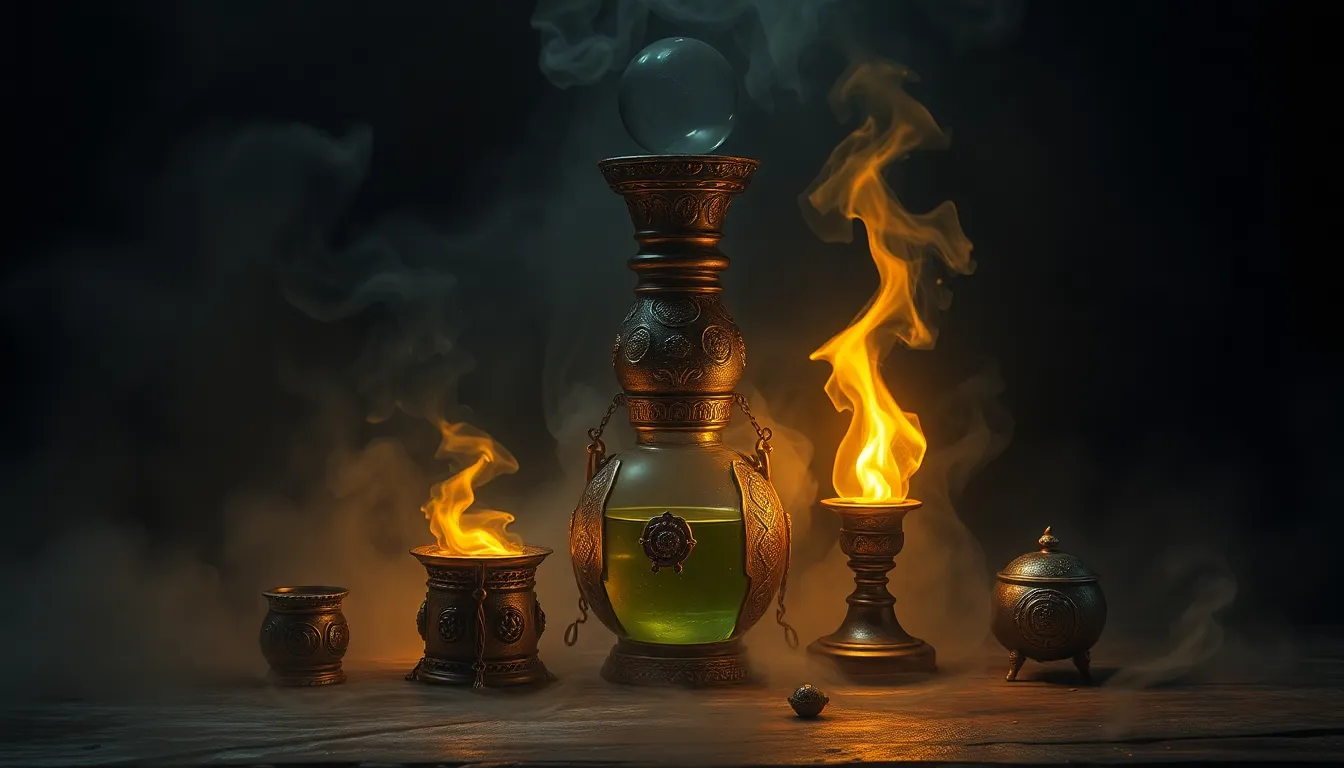The Peryton in Celtic Folklore: A Guardian of the Otherworld
I. Introduction
Celtic folklore is a rich tapestry of myths and legends that reflect the values, beliefs, and spiritual practices of the ancient Celtic peoples. Its narratives are interwoven with themes of nature, the supernatural, and the intricate relationship between the mortal realm and the Otherworld. Among the many mythical creatures that populate this folklore, the Peryton stands out as a fascinating figure, embodying attributes of both majesty and mystery.
The Peryton, often described as a hybrid creature with the body of a deer and the wings of a bird, serves as a significant symbol within these tales. This article aims to explore the role of the Peryton as a guardian of the Otherworld, examining its origins, attributes, and the profound symbolism it holds in both ancient and modern contexts.
II. The Origins of the Peryton in Celtic Mythology
The Peryton’s origins can be traced back to ancient Celtic beliefs, where it was revered as a creature that bridged the gap between the human world and the mystical realms. Although less commonly mentioned than other mythical beings, the Peryton’s presence in folklore suggests a deep-seated appreciation for creatures that embody both terrestrial and celestial qualities.
Physically, the Peryton is often depicted as having the antlers of a stag, the body of a deer, and large, powerful wings. This unique combination symbolizes strength, agility, and the ability to traverse both land and sky. The Peryton is also associated with the elements, often representing the harmony between earth and the heavens.
When compared to other mythical creatures in Celtic folklore, such as the unicorn or the selkie, the Peryton occupies a unique niche. While many creatures symbolize purity or transformation, the Peryton’s role as a guardian emphasizes its protective attributes and its connection to the Otherworld.
III. The Role of the Peryton as a Guardian
In Celtic mythology, guardianship is a significant theme, often embodied by creatures or deities that protect sacred spaces, passageways, or the boundaries between realms. The Peryton, with its vigilant nature and majestic form, serves as a guardian of the boundaries that separate the mortal realm from the Otherworld.
- Protecting Sacred Spaces: The Peryton is believed to watch over sacred groves, ancient burial sites, and other liminal spaces where the veil between worlds is thin.
- Ward against Intruders: As a guardian, the Peryton is said to ward off those who would seek to trespass into the Otherworld without permission, ensuring that only the worthy may enter.
Numerous stories and legends illustrate the Peryton’s protective role. In one tale, a traveler who seeks to enter the Otherworld must first earn the Peryton’s trust, showcasing the creature’s discerning nature and its commitment to safeguarding the mysteries of the afterlife.
IV. The Otherworld in Celtic Belief
The Otherworld holds a central place in Celtic culture, often described as a realm of eternal youth, beauty, and abundance. It is a place where the spirits of the deceased reside, and it is intricately linked to themes of life, death, and rebirth. The Peryton’s connection to the Otherworld enhances its significance as a guardian, guiding souls to their final resting place.
In this context, the Peryton symbolizes:
- Life and Death: The creature embodies the cyclical nature of existence, reminding us that life and death are interconnected.
- Rebirth: As a guardian, the Peryton facilitates the journey of souls, ensuring that they are reborn into the Otherworld, thus continuing the cycle of life.
V. Symbolism of the Peryton in Modern Interpretations
In contemporary literature and art, the Peryton has resurfaced as a symbol of mystery and magic. Its depiction often reflects themes of nature, spirituality, and the quest for knowledge beyond the mortal realm.
In modern fantasy genres, the Peryton has influenced various narratives, appearing in novels, games, and visual media. Its unique characteristics inspire creativity, leading to a resurgence of interest in this mythical creature.
The symbolism of the Peryton resonates with contemporary themes, such as:
- Nature and Spirituality: The Peryton represents the connection between humanity and the natural world, urging a deeper understanding of our relationship with nature.
- Protection and Guidance: In modern belief systems, the Peryton symbolizes the protectors in our lives, guiding us through challenges and uncertainties.
VI. Comparative Analysis: Peryton vs. Other Mythical Guardians
When analyzing the Peryton in relation to other mythical guardians, several similarities and differences emerge. For instance:
- Similarities:
- Like griffins, both the Peryton and griffins are hybrid creatures that combine features of different animals and serve as protectors.
- Similar to phoenixes, the Peryton embodies themes of rebirth and transformation, symbolizing the cyclical nature of life.
- Differences:
- The Peryton is unique to Celtic mythology, whereas griffins and phoenixes appear in various cultural mythologies.
- While griffins are often associated with strength and vigilance, the Peryton embodies both terrestrial and celestial qualities, highlighting its role as a mediator between worlds.
The broader implications of guardian figures in folklore across cultures underscore the universal human need for protection and guidance in navigating life’s uncertainties.
VII. The Peryton in Modern Spiritual Practices
In recent years, there has been a resurgence of interest in Celtic mythology, with many individuals exploring the Peryton’s significance in contemporary spirituality. Rituals and practices involving the Peryton often emphasize its protective qualities and its role as a guide in the spiritual journey.
- Rituals: Some modern spiritual practitioners incorporate the Peryton into rituals aimed at seeking protection or guidance during transitional phases of life.
- Symbols: The Peryton is often used as a symbol of protection and guidance, reminding individuals of their connection to the natural world and the spirit realm.
VIII. Conclusion
The Peryton holds a significant place in Celtic folklore as a guardian of the Otherworld, embodying themes of protection, life, death, and rebirth. Its rich symbolism and unique attributes make it a compelling figure in both ancient and modern contexts. As we continue to explore the depths of Celtic mythology, the Peryton invites us to reflect on our own journeys and the guardians that guide us along the way.



